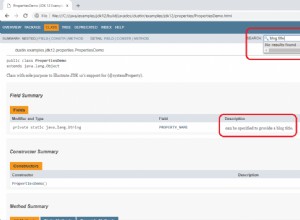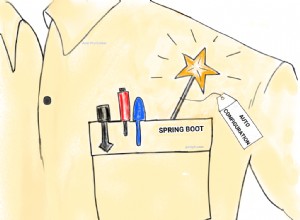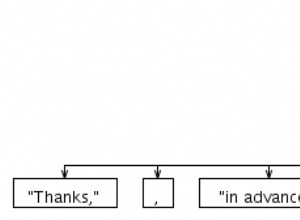Verwendung von Clockskew in SAML Assertion im SAML-Protokoll
In diesem Beitrag werde ich erklären, wie wir Clockskew in SAML Assertion verwenden können, um ein allgemeines Problem zu vermeiden, wenn ein Service Provider (SP) eine SAML-Antwort vom Identity Provider (IdP) erhält und sich beide auf unterschiedlichen Computern befinden ist im Allgemeinen das Szenario.
Wenn also ein Benutzer auf eine SP-Anwendung zugreift, sendet der SP eine Authentifizierungsanforderung an den IdP und der IdP sendet eine SAML-Antwort an den SP. Die typische SAML-Antwort sieht wie folgt aus:
<saml2p:Response Destination="https://localhost:8443/spring-security-saml2-sample/saml/SSO"
ID="_8ced26c57648ea420c5e27ac7f3d78b3"
InResponseTo="a3ei0bej41ie0dg738jji60271f1bca"
IssueInstant="2018-10-31T18:39:05.109Z"
Version="2.0"
xmlns:saml2p="urn:oasis:names:tc:SAML:2.0:protocol"
xmlns:xsd="http://www.w3.org/2001/XMLSchema"
>
<saml2:Issuer xmlns:saml2="urn:oasis:names:tc:SAML:2.0:assertion">https://sts.betterjavacode.com/sts</saml2:Issuer>
<ds:Signature xmlns:ds="http://www.w3.org/2000/09/xmldsig#">
<ds:SignedInfo>
<ds:CanonicalizationMethod Algorithm="http://www.w3.org/2001/10/xml-exc-c14n#" />
<ds:SignatureMethod Algorithm="http://www.w3.org/2000/09/xmldsig#rsa-sha1" />
<ds:Reference URI="#_8ced26c57648ea420c5e27ac7f3d78b3">
<ds:Transforms>
<ds:Transform Algorithm="http://www.w3.org/2000/09/xmldsig#enveloped-signature" />
<ds:Transform Algorithm="http://www.w3.org/2001/10/xml-exc-c14n#">
<ec:InclusiveNamespaces PrefixList="xsd"
xmlns:ec="http://www.w3.org/2001/10/xml-exc-c14n#"
/>
</ds:Transform>
</ds:Transforms>
<ds:DigestMethod Algorithm="http://www.w3.org/2001/04/xmlenc#sha256" />
<ds:DigestValue>k6k9seVwZT8qEfainB+HDUJmv7wLwPjJxRARgrFLk3E=</ds:DigestValue>
</ds:Reference>
</ds:SignedInfo>
<ds:SignatureValue>
eYl7/5Bg4f2ZtXYl1Tp/ZW4CIqna1sjHjVSB/zhj3NHncQu7pq9PBTdWz0JEaE8+efICz7trDQvI
J0tih35Vg7NqDtOeps7vMttV0XvrnWKIXEqrscyNgkhwy+KW2oprKIWTJq6y3Z0kQ7n2DlTRkfAE
yLRPxqr8AZU+77Tbv4DmTQVp934ivibUaMNU79nkhMMo7vf0ldpeNCe5Ll5Q7nxgNBCrL4mhbGdU
DNJDVqJIhQZDJUYhBVZSgLo6mYLxf0ndQr5+GdcvO3i8VlooH49I5ZO6LfsBlNiSU6WezC0Fcz8J
biodrT3h62Jny8FKUgYfXA8i0ZoAerCxHmLGFQ==
</ds:SignatureValue>
<ds:KeyInfo>
<ds:X509Data>
<ds:X509Certificate>MIICpTCCAY2gAwIBAgIHAKQk/Tty7TANBgkqhkiG9w0BAQsFADATMREwDwYDVQQDDAhJbmZvclNU
UzAeFw0xNzExMTAxNjIwMjVaFw0xOTExMTAxNjIwMjZaMBMxETAPBgNVBAMMCEluZm9yU1RTMIIB
IjANBgkqhkiG9w0BAQEFAAOCAQ8AMIIBCgKCAQEAuy40GofgfSldiu7AXRSWQZo8YIUmdJOXV5gd
YUiIBggcm5J+jttd21av9AWBDLtvekIqgG+nM1SEarDNlCgrnThqDtdsBDnT+B5FQowLwqNQZb0C
6PSWccp484OLHhv3YwbjV/IxgW6wlv2EejPF93NTPc5TkkpIKIEARJwKiUvuwzkcX1atD8HESj8/
5wZhK3g3MSv+CaJb1Y732U2aa34RI6HYRNlKRsqRj55SZnPs3AmIBL/rdVbt5eYJdK+jXSOMQ9Sb
TNkgTAYKnlSQP8NhsNc1Y5ZJ231KD3rSqHEXwpKVXFuEgtBnCL9utqyUU0Fu9PNJJj0hf9otMJw2
pQIDAQABMA0GCSqGSIb3DQEBCwUAA4IBAQAsqxA/+llqNtJq/VPtAa0XwtldB7/4Gew5LgfU5Yj7
/ruHuxCh03xfnLyjo0bxrFeMbhHMg4MzJhgah0zTIl4WMRI781CiMxGfMdvQAHhY5hgpryqKUTbH
qcIoW1WkTEL+TrOSk2gjL/n/4KsUJ3XKeI4j4h2RDvbIF8u9cbrB5RupEwJlo/pK3mCr3GQGFxVX
4yli+AysMmz8JWz2hWQad0QQr9KIYmZdgauNt7uYn4u+7cngtTtQF/EMoZU1pAFI5lDP13mxI1rR
eYGzoKhGfHIy7TiXYvqX0vFomzkgr6D0DnRlRkQR8J5EVtnGZ7sF50KlNviG+IxrPNndUdeX</ds:X509Certificate>
</ds:X509Data>
</ds:KeyInfo>
</ds:Signature>
<saml2p:Status>
<saml2p:StatusCode Value="urn:oasis:names:tc:SAML:2.0:status:Success" />
</saml2p:Status>
<saml2:Assertion ID="_43514fee402111bfa8ef07e2bb3e1816"
IssueInstant="2018-10-31T18:39:05.109Z"
Version="2.0"
xmlns:saml2="urn:oasis:names:tc:SAML:2.0:assertion"
>
<saml2:Issuer>https://sts.betterjavacode.com/sts</saml2:Issuer>
<saml2:Subject>
<saml2:NameID Format="urn:oasis:names:tc:SAML:2.0:nameid-format:transient"
NameQualifier="https://sts.betterjavacode.com/sts"
SPNameQualifier="https://localhost:8443/spring-security-saml2-sample/saml/metadata"
>-74375301938178262591541011144180</saml2:NameID>
<saml2:SubjectConfirmation Method="urn:oasis:names:tc:SAML:2.0:cm:bearer">
<saml2:SubjectConfirmationData InResponseTo="a3ei0bej41ie0dg738jji60271f1bca"
NotOnOrAfter="2018-10-31T18:44:05.109Z"
Recipient="https://localhost:8443/spring-security-saml2-sample/saml/SSO"
/>
</saml2:SubjectConfirmation>
</saml2:Subject>
<saml2:Conditions NotBefore="2018-10-31T18:39:05.109Z"
NotOnOrAfter="2018-10-31T18:44:04.109Z"
>
<saml2:AudienceRestriction>
<saml2:Audience>https://localhost:8443/spring-security-saml2-sample/saml/metadata</saml2:Audience>
</saml2:AudienceRestriction>
</saml2:Conditions>
<saml2:AttributeStatement>
<saml2:Attribute Name="http://schemas.microsoft.com/claims/Tenant">
<saml2:AttributeValue xmlns:xsi="http://www.w3.org/2001/XMLSchema-instance"
xsi:type="xsd:string"
>ABC Company</saml2:AttributeValue>
</saml2:Attribute>
<saml2:Attribute Name="http://schemas.microsoft.com/claims/Identity">
<saml2:AttributeValue xmlns:xsi="http://www.w3.org/2001/XMLSchema-instance"
xsi:type="xsd:string"
>testuser</saml2:AttributeValue>
</saml2:Attribute>
<saml2:Attribute Name="http://schemas.xmlsoap.org/claims/CommonName">
<saml2:AttributeValue xmlns:xsi="http://www.w3.org/2001/XMLSchema-instance"
xsi:type="xsd:string"
>Test User</saml2:AttributeValue>
</saml2:Attribute>
<saml2:Attribute Name="http://schemas.microsoft.com/claims/Email">
<saml2:AttributeValue xmlns:xsi="http://www.w3.org/2001/XMLSchema-instance"
xsi:type="xsd:string"
>[email protected]</saml2:AttributeValue>
</saml2:Attribute>
<saml2:Attribute Name="http://schemas.microsoft.com/claims/Session">
<saml2:AttributeValue xmlns:xsi="http://www.w3.org/2001/XMLSchema-instance"
xsi:type="xsd:string"
>-65311121040491585821541011144177</saml2:AttributeValue>
</saml2:Attribute>
</saml2:AttributeStatement>
<saml2:AuthnStatement AuthnInstant="2018-10-31T18:39:05.109Z"
SessionIndex="31079178551135950171541011144177"
>
<saml2:AuthnContext>
<saml2:AuthnContextClassRef>urn:oasis:names:tc:SAML:2.0:ac:classes:PasswordProtectedTransport</saml2:AuthnContextClassRef>
</saml2:AuthnContext>
</saml2:AuthnStatement>
</saml2:Assertion>
</saml2p:Response>
Nun befinden sich SP und IdP auf unterschiedlichen Rechnern. Und es kann vorkommen, dass ihre Uhren nicht synchronisiert sind. Wenn IdP also die Antwort generiert, hat sie ein Element SubjectConfirmationData die NotBefore enthält und NotOnOrAfter. Subject gibt Details über den Benutzer und die vertrauende Seite an, die die Assertion empfängt. Die vertrauende Seite muss überprüfen, ob die Assertion vom richtigen Aussteller stammt.
NotBefore – Zeit, vor der der Betreff nicht validiert werden kann.
NotOnOrAfter – Zeit an oder nach der das Thema abgelaufen ist.
Ähnlich wird es Conditions geben -Element in der Assertion und dieses Element enthält auch die Attribute NotBefore oder NotOnOrAfter . Diese beiden Attribute geben an, wann die Assertion gültig ist und nach welcher Zeit sie abläuft.
Problem
Wenn wir nun ein Szenario berücksichtigen, in dem die Systemuhren von IdP und SP nicht synchron sind und wenn die Idp-Uhr der SP-Uhr voraus ist, wie gehen wir mit diesem Szenario um?
Lösung
Wie im obigen Szenario beschrieben, schlägt die Assertion-Validierung aufgrund von NotBefore fehl Zeit wird größer sein als die Zeit auf dem SP-Rechner.
Um dieses Problem zu lösen, können wir entweder sicherstellen, dass IdP- und SP-Uhren synchron sind. Aber dies scheint eine vom Menschen abhängige Lösung zu sein, und das Synchronisieren von Uhren ist nicht immer eine praktische Lösung.
Eine andere Möglichkeit, dies zu lösen, ist das Hinzufügen eines Clockskew in der SAML-Assertion. Eine vertrauende Seite, die die Assertion verarbeitet, sollte einen kleinen Zeitversatz anwenden, um kleine Zeitänderungen zu berücksichtigen.
private int clockSkew = 120;
SubconfirmationData subjectConfirmationData = subjectConfirmation.getSubjectConfirmationData();
if(subjectConfirmationData.getNotOnOrAfter().plusSeconds(clockSkew).isBeforeNow())
{
// throw error - Subject Confirmation Data has expired
}
/***
*
*
*/
if (conditions.getNotBefore() != null && conditions.getNotBefore().minusSeconds(clockSkew).isAfterNow())
{
throw new SAMLException("Assertion condition notBefore is not valid");
}
if (conditions.getNotOnOrAfter() != null && conditions.getNotOnOrAfter().plusSeconds(clockSkew).isBeforeNow())
{
throw new SAMLException("Assertion condition notOnOrAfter is not valid");
}
Referenzen
- SAML-Spezifikation
- SAML-Assertion mit NotBefore und NotOnOrAfter



